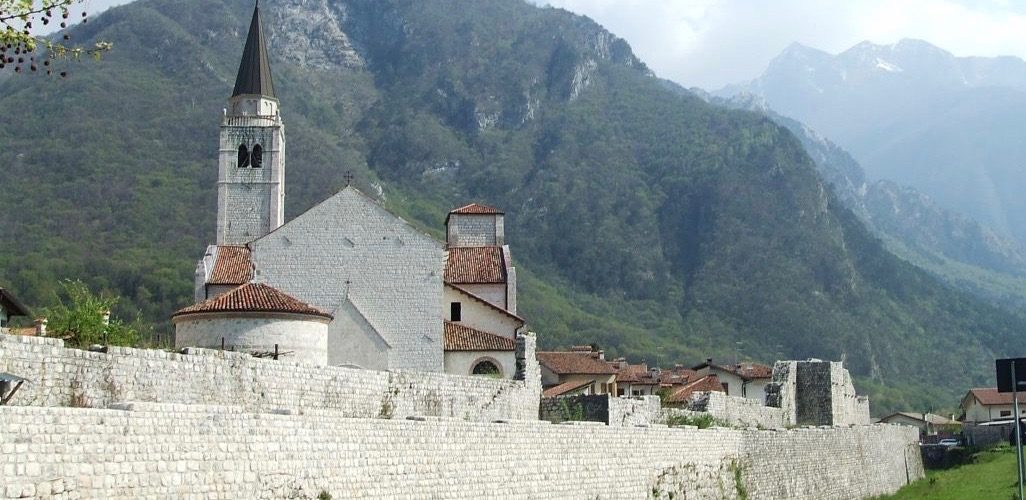Venzone, the village of the villages 2017 in Italy
READ ME IN  Italiano
Italiano
«Being beautiful is not enough, you must also have a soul. This obviousness was to tell you that Venzone is your destination if you want to know how to survive the ugliness of life.»
Venzone is the Borgo dei Borghi 2017, elected to the fury of the television population during the Sunday broadcast of Rai 3 Kilimanjaro, which has been organizing a television competition for four years to elect the most representative village in Italy, in collaboration with the club of the most beautiful villages of Italy. Twenty villages (have I already said villages?) participate in the competition, one for each Italian region. So far, Sicily has been the main protagonist, but this year the attention has been catalyzed on the other side of the Peninsula.
Venzone (institutional site) is a bit of a stranger. Admit it, you don’t even know where it is, like so many of those little Italian treasures that are historical towns. I am repeating this to the point of nausea, this is the year of the villages of Italy and there must be a reason why the focus has shifted from the great centers of culture to small villages. Tourist flows are changing, as are the types of tourists: aware, attentive to sustainability and attracted by small businesses instead of mainstream destinations.
Moving on, to go to Venzone you have to turn your compass towards the north-east. The “village of the villages” is located in the province of Udine, in the heart of Friuli Venezia Giulia, clinging to the Regional Natural Park of Julian pre-Alps and caressed by the river Tagliamento, which I don’t know but I always remember it from the geography books at school.
Venzone may seem like a village like many others. It has an external wall wrapping the white houses and the parish church of Sant’Andrea, the Cathedral of the village. In 1965 it was declared a National Monument, as it’s the only example of a fortified village with 14th century walls in the region.
Populated by 2117 souls, we have known about this place as early as 500 BC, as it used to be a mandatory passage to the north. Conquered, subdued, plundered, re-flourished, fortified, Venzone is one of those places where every stone could tell the story, especially because those same stones have tempted fate. A little like Civita di Bagnoregio (of which I wrote here), this country has not surrendered to death: in 1976, hit by a series of serious seismic events, it went almost completely destroyed and gave immediate proof of great resilience through the work of the inhabitants, who formed the Coordination Committee for the recovery of cultural heritage and worked tirelessly to fully recover the entire historical-cultural heritage, preserving it from jackals, reconstructing and saving frescoes. The painstaking work done in Venzone has shown that, in spite of catastrophic events, art can be saved, recomposed. The careful historical documentation of the place allowed the creation of a detailed plan, which preserved the original material and allowed a faithful reconstruction of the damaged buildings, with the very same stones that had collapsed. The reconstruction procedure is called anastylosis: the stones are collected, their original position is recognized, they are cataloged and repositioned, one by one. Against all odds, and thanks to the efforts of the volunteers, a miracle happened and Venzone rose from the ashes like a phoenix.
Inside the Duomo, the symbol of the village, it’s still possible to admire important frescoes of the 14th century, the Consecration of the Duomo, Meeting of San Martino with the poor and St. George frees the princess from the dragon. The baptismal font, dating back to the 16th century, was recovered together with the Lamentation of Christ, a composition of eight wooden statues, dating back to 1530. In the crypt of the baptistery of San Michele are preserved mummies which were found in the cathedral in 1647: the bodies are literally parchmented, thanks to the combined and random action of a waterfowl mushroom and calcium sulfates present in the subsoil, date back to a period from 1348 to 1845 and, among them, there’s also the mummified body of the noble of Venzone, Paolo Marpillero.
Beyond its intrinsic value and the great example of architectural recovery, Venzone is well worth a visit because of its geographical position. At the foot of the Julian Prealps, it’s your starting point for excursions and scenic walks, exploring the Celtic paths that connect the votive churches of the area, dating back to the 15th century.
The routes to do on foot and by mountain bike are many and clearly signalled, but if you are too lazy to go on your own, bear in mind that the Park of Prealpi Giulie organizes guided thematic tours along the territory. Venzone is teeming with events all year round( the calendar here ) and, mindful of its misadventures, is committed to raising funds for the earthquake zones in central Italy.
There are places that deserve to be visited for their beauty, for history, art, culture, food, events, the fresh air. Other than for these reasons, Venzone deserves a visit because it’s a reminder of the second chances, of resilience, of the will to react in spite of everything, a bit like each of our lives should be.
Carolina Attanasio
READ ME IN  Italiano
Italiano


